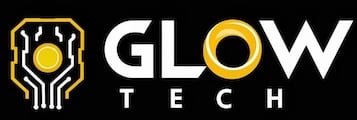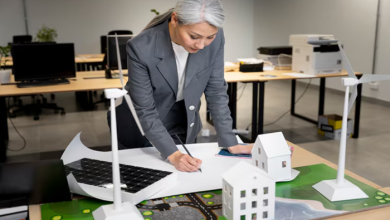
The emergence of headless CMS systems has transformed the present state of content management for the digital realm. There are new advantages and disadvantages for both UX and content teams. The responsive nature of headless options only increases the need for UX and content team collaboration. If both teams can work together, users enjoy a better, more streamlined experience.
Clear Communication Lines
The best way for UX and content teams to collaborate in a headless CMS environment is to maintain proper lines of communication. Since the presentation and content layers are decoupled, it’s important to remain on the same page with transparent, frequent communication. How headless CMS enhances flexibility becomes evident in this dynamic allowing UX designers and content creators to work independently yet cohesively, adapting quickly to project needs. Team meetings should occur jointly, as needed, to discuss what content is needed, what UX requires, and what user journeys must be traveled. This consistent dialogue fosters understanding, limits confusion for both teams, and potentially provides a united front on content and UX direction.
Unified Goals and Objectives
The easiest way to get everyone on the same page is to ensure there are unified goals and objectives. The two groups can work together to establish KPIs and benchmarks for success that define solid UX but also strong performance content. For example, if the UX team determines the primary actions a user should be taking to succeed in engagement over time, it would benefit them to share these with the content team to develop goals for how users should engage with content. This alignment not only measures success for everyone but also provides a unified front to ensure efforts by both teams complement each other for the desired digital outcome.
Collaboration on Content Strategy
The most important part of a headless CMS environment is the content strategy. Collaborating on a strategy from the beginning helps ensure the creation of authentic layers of content relative to the user’s experience needs. For example, by working with each other, UX experts can explain what they need in terms of navigation and interaction just as content experts can explain how to categorize or group content based on different situations for users. Understanding where both ideas come from helps fortify the best approach from the onset regarding how expectations will be set during the digital experience and how users will want to engage.
Collaborative Content Modeling Initiatives
One of the best ways for UX and content teams to stay in sync is to collaborate on content modeling initiatives. When efforts are joined to create content models, for example, it’s easier to ensure the planned content can be structured and reused for all the proper use cases. Content teams can identify content types, necessary metadata, and relationships; UX designers can chime in on how they believe users would like to see content presented and discovered. When there’s a unified approach with content modeling, it’s easier to manage content going forward, ensuring consistency across channels and increased adaptability, which ultimately creates a better UX.
Review Sessions
Another way for UX and content to stay aligned is to have review sessions. Throughout the project life cycle, consistent meetings can keep everyone on the same page. They can assess the placement of content, review flows made by one team, and offer feedback to the other on where adjustments can be made. The sooner content teams can weigh in on wireframe structures and the sooner UX teams can provide feedback during user testing on content prototypes, the sooner problems can be identified and solved. This makes for a better usability and engagement experience for a digitized product across multi-delivery channels.
Shared Analytics Findings
Finally, a content and UX team aligned will also share analytics findings for a better understanding of user behavior. Headless CMS platforms come with endless reports and opportunities for user data utilization over time. Meetings dedicated to reporting out on analytics findings and feedback from users via surveys or in-app messaging can help both teams refine the organization of content and present best practices for use and adjustment in real time.
Implementing Design and Content Standards Consistently
Content and design standards consistency enhances the overall experience. The UX and content teams should work in conjunction to develop extensive style guides, content standards, and user interface standards. The more articulate the standards, the more they reinforce consistency across all digital assets and properties with logical flow initially creating confusion for the user only complicates things down the line and negates usability efforts. Thus, a meeting to parse through suggested edits helps team cohesion since the goal is to always provide a better online experience for potential digital users.
Offering Interdepartmental Training and Workshops
Interdepartmental training and workshops establish better collaborative efforts between the teams by ensuring everyone knows what each other does. UX learns more about content, and content creators see how their pieces contribute to user action and experience. Training interventions every few months focused on best practices, definitions, and trends in UX and content empower each team separately but also allow for better brainstorming efforts during troubleshooting discussions if a stronger understanding of the other team’s efforts comes into play.
Collaborating Through Agile Efforts
Agile offers better collaboration for UX and content teams. Whether they’re meeting regularly for developmental purposes or using the same management platforms, Team A will be aware of Team B’s goings-on. With agile, collaboration, inclusion, and rapid turnaround time from feedback, both teams can make necessary changes at a moment’s notice based on project needs. This keeps everything aligned for one product instead of going off on a tangent due to poor communication.
User-Focused Decisions Above All Else
The best way to successfully align UX and content teams in a headless CMS environment is through user-focused decisions above all else. The UX and content teams should come to a mutual understanding that users and their needs, usage, and what they’re likely to want in the future should always come first as they create and produce in-demand deliverables. Therefore, constant testing, surveys, and outreach for feedback ensure that the two teams’ decisions regarding content and design are best suited for what users want. When the users come first, the ability for UX and content teams to mesh their pieces in a singular direction to create a unified digital experience that promotes engagement becomes possible.
Shared Documentation and Collaborative Tools
Another way to successfully align UX and content teams in a headless CMS environment is through shared documentation and collaborative tools. While it’s necessary for the teams to work together and continuously collaborate directly, digital collaborative tools allow for efficient and transparent sharing of information. Whether it’s a collaborative content tool or a hybrid design application, access to similar documentation efforts ensures that developments about content, notes from collaborative discussions regarding UX needs, and vice versa are accessible to everyone involved whenever necessary.
Collaborative Content Testing and User Research
Collaborative content testing and user research efforts should also be pooled together to align the efforts. The UX and content teams should come together on purpose to establish how best to test their hypotheses surrounding usability. For example, by putting together technology that boasts adequate buttons and clear navigational paths, they can assess with audiences for usability, understandability, and satisfaction. Assessing the results collaboratively gets to the heart of the strengths and weaknesses from both sides to make changes that will please any user at any point of engagement.
Shared Performance Metrics for Continuous Alignment
UX and content teams can remain aligned over time through performance metrics that apply to both content and experience. For example, engagement, bounce and drop-off rates; inquiries and conversions; and satisfaction ratings are all final indicators of success. Having the same final performance metric means the team has to monitor real-time characteristics of the experience to create one cohesive, enjoyable digital experience and the reason to monitor the performance metrics in the first place.
Team Retrospectives for Growing Together Over Time
Another way that content and UX teams can stay aligned over time is through retrospective meetings. Retrospectives are meetings where team members from both sides convene to discuss what worked, what didn’t, and what was difficult. Thus, creating situations for team retrospectives to understand how to do better moving forward fosters inter-team communication and allows for clear short- and long-term goals. Thus, aligning the two teams for current obstacles facilitates better understanding down the line.
Conclusion
The ultimate seamlessness of alignment makes UX and content teams operate on the same level within a headless CMS environment, creating a better experience for everyone who needs to engage with the digital product because a more consistent, cohesive experience is presented. Since headless CMS environments detach the actual content management from what is shown on the front end, these two teams if they do not collaborate effectively may end up creating a fictitious experience for all. Thus, team management must ensure that channels of communication remain clear to discuss ongoing development concerns and how content and UX frameworks can appropriately align to create fewer points of friction and greater accessibility and usability for all content rendered.
Alignment is based upon goals, strategies, and approaches derived similarly; for example, where one team sets certain levels A and B and the other sets goals C and D without regard to each other, the nature of the business will dictate that integration occurs to best meet projected expectations even if for different audiences in the end. Thus, this makes it easier for joint integration to better facilitate user journeys through better-developed planning and execution of efforts, fostering better user engagement, less bounce rate, and greater engagement over time with digital products.
Another way that alignment occurs is through collaborative content modeling where UX professionals and content team members meet to discuss content structures as applicable to user journey navigation and interaction. By involving each other on these focuses i.e., UX designers work with content creators on content models that ensure ease of finding material while content creators advise on developments that best suit certain situations content is better received and usable.
Agile methodologies work nicely in headless CMS environments due to iterative development cycles, project milestones, team retrospectives, and various feedback options available at frequent checkpoints. Agile practices promote changes based upon real-time data which encourage teams to iterate as they go and assess collateral with greater clarity when consistently reviewed. Thus, UX and content teams alike can employ the frequent opportunities to pivot and ensure that they overcome obstacles sooner rather than later, trial solutions for areas of concern sooner rather than later, and change content and designs based upon immediate feedback.
As long as user needs remain at the forefront of any decisions made, data is utilized to support arguments or courses of action embarked upon, and cross-functional collaboration remains strong, teams will discover greater cohesion throughout the life cycle of the digital product. This is not to say that this does not apply to other environments beyond headless CMS; however, this does strengthen the ultimate mission overall of the headless CMS endeavors experience from the alignment perspective.




